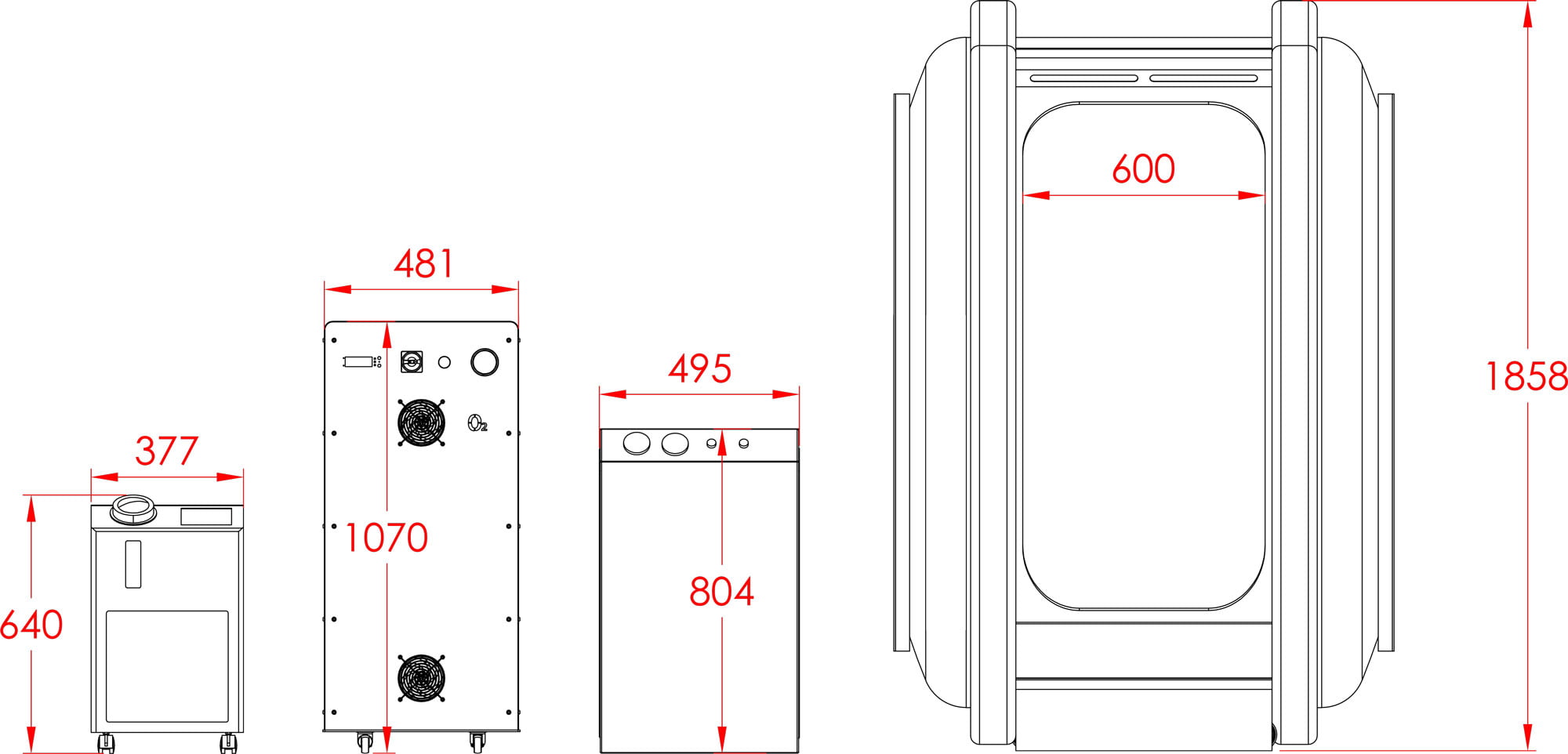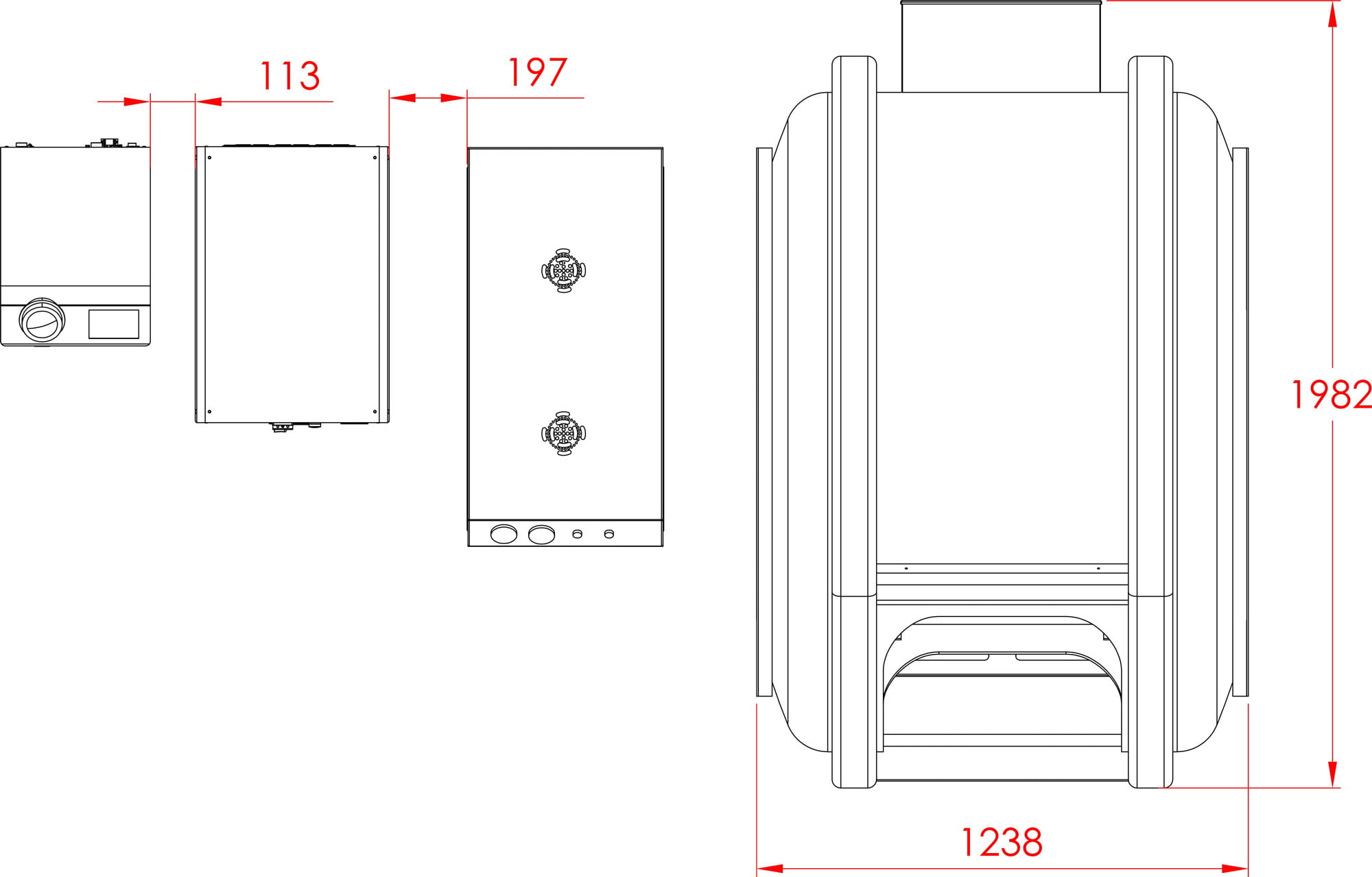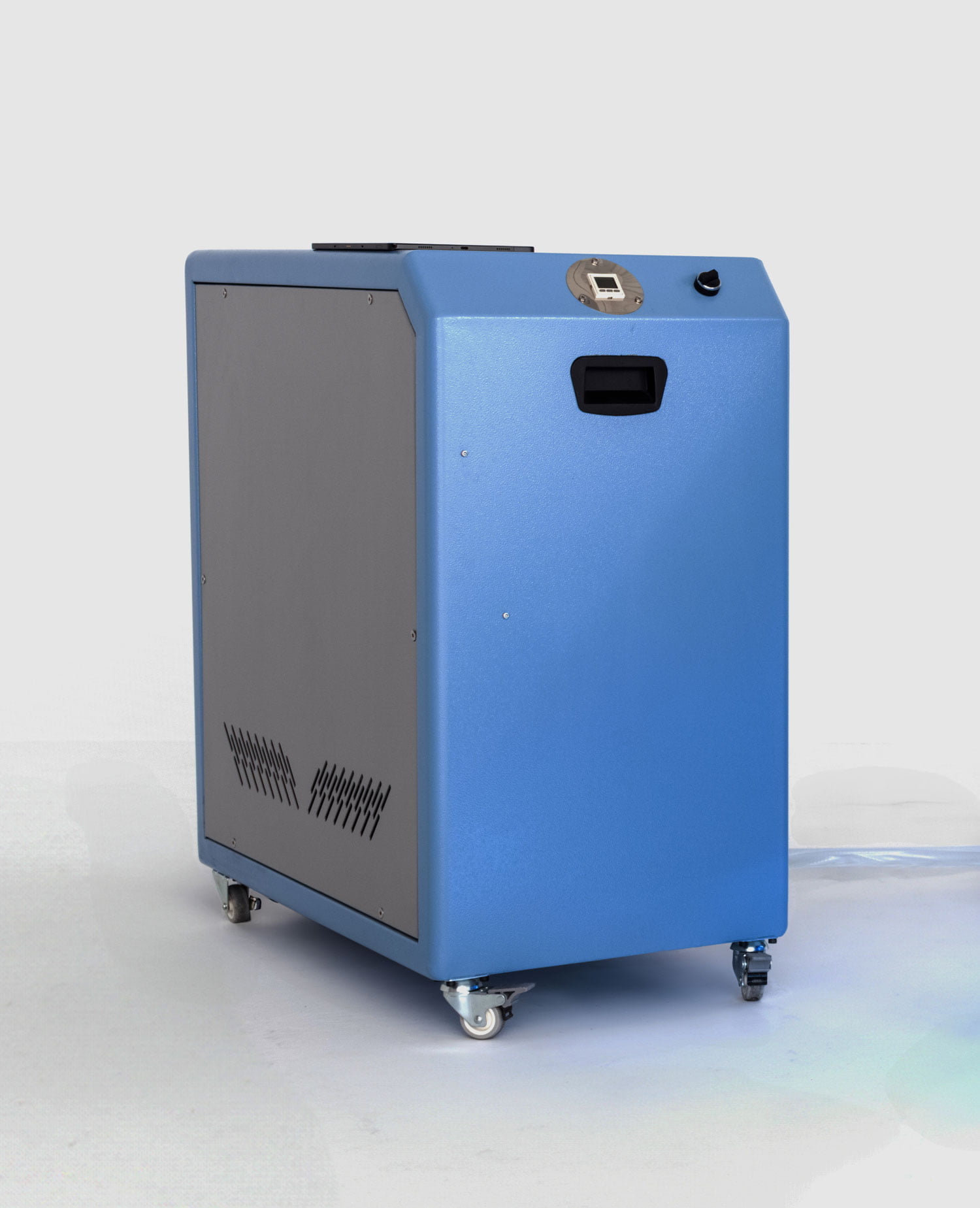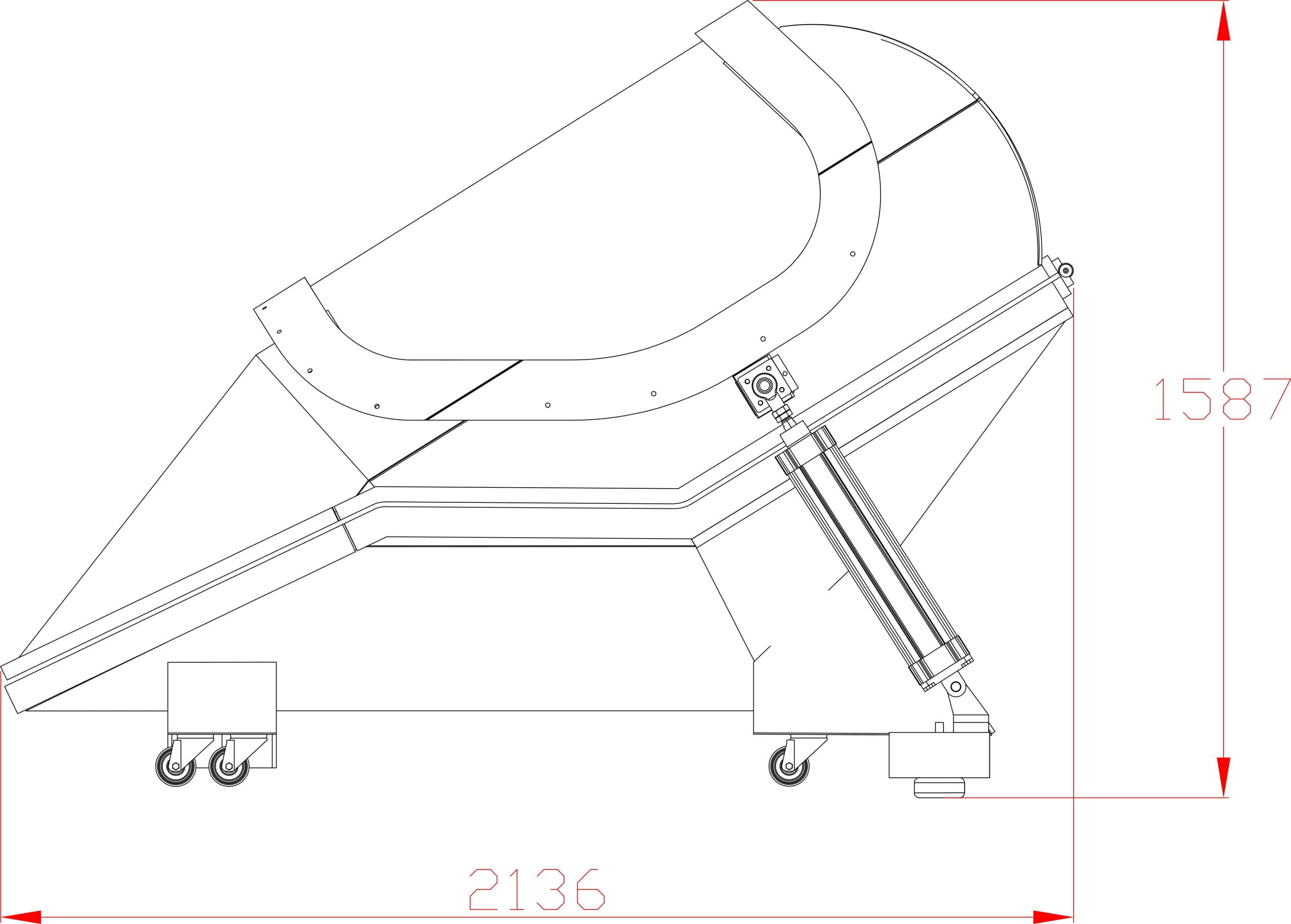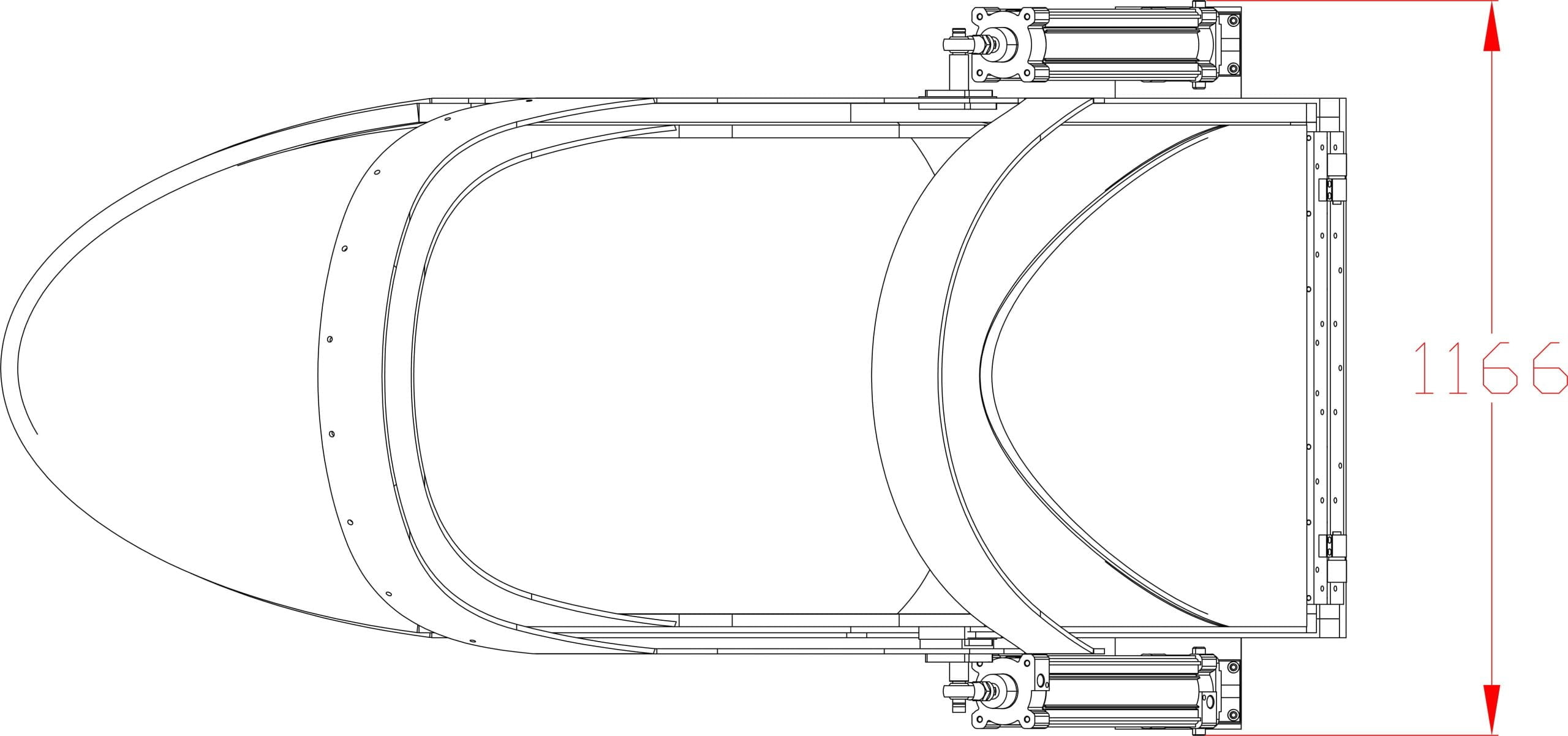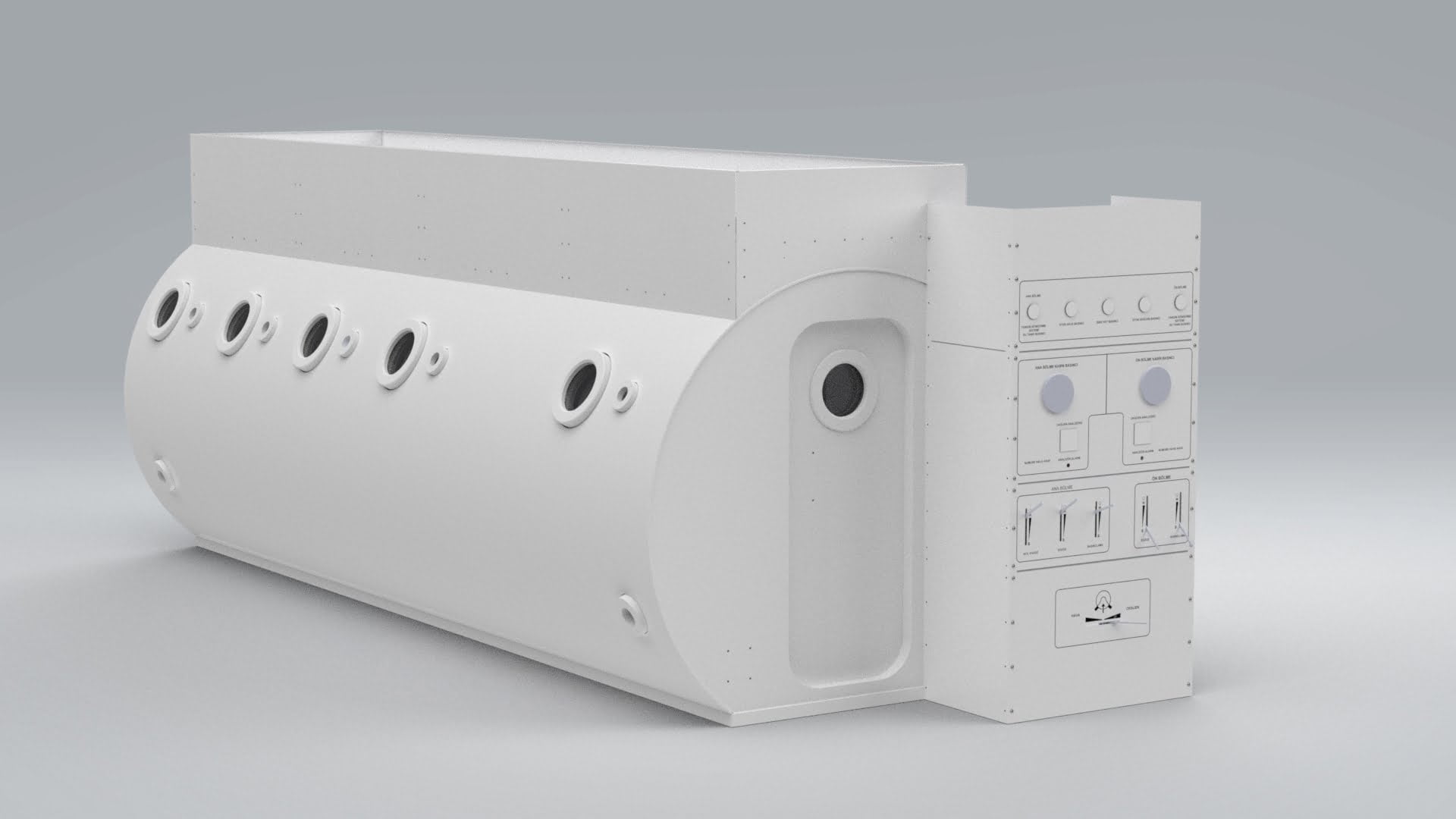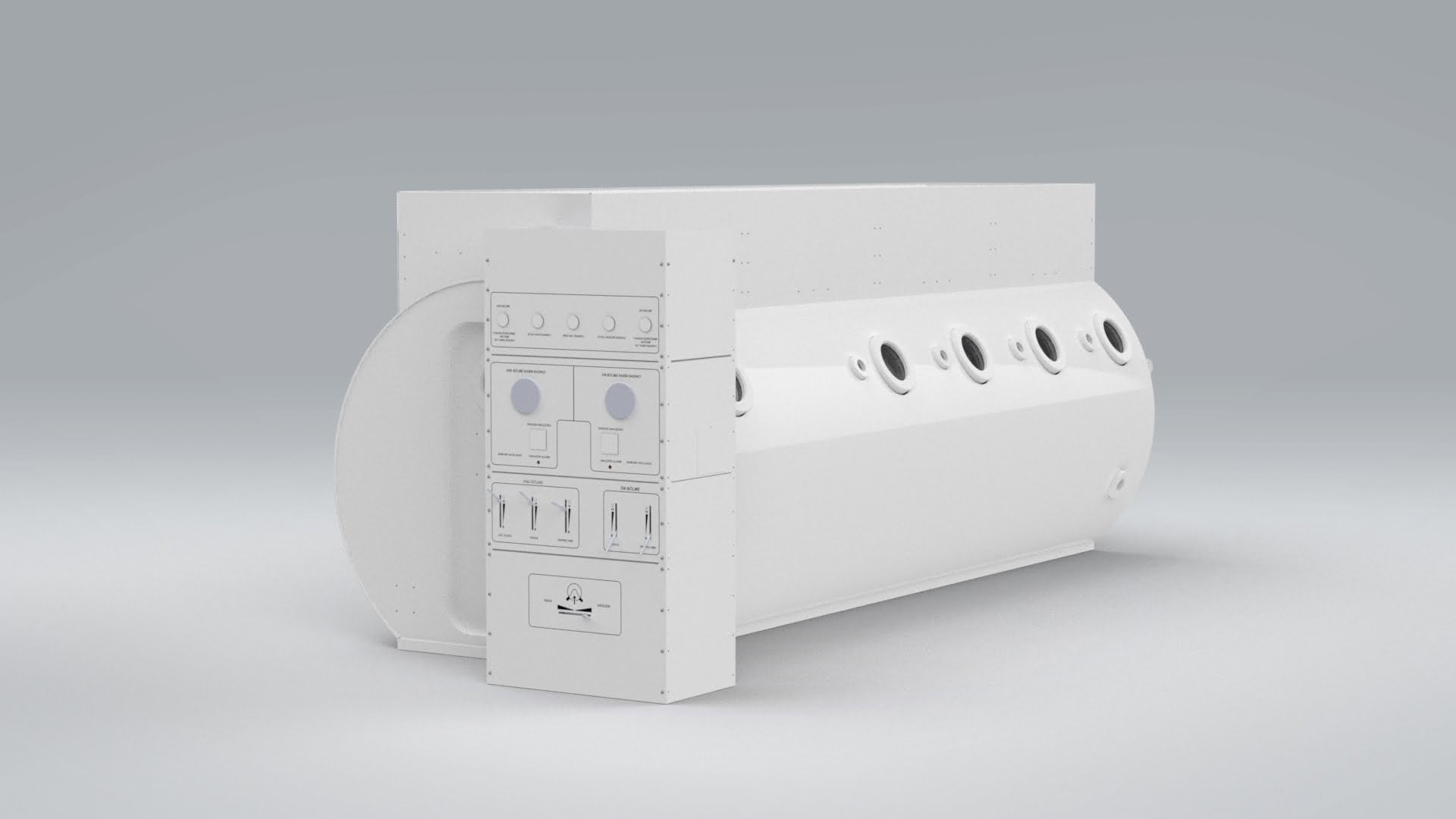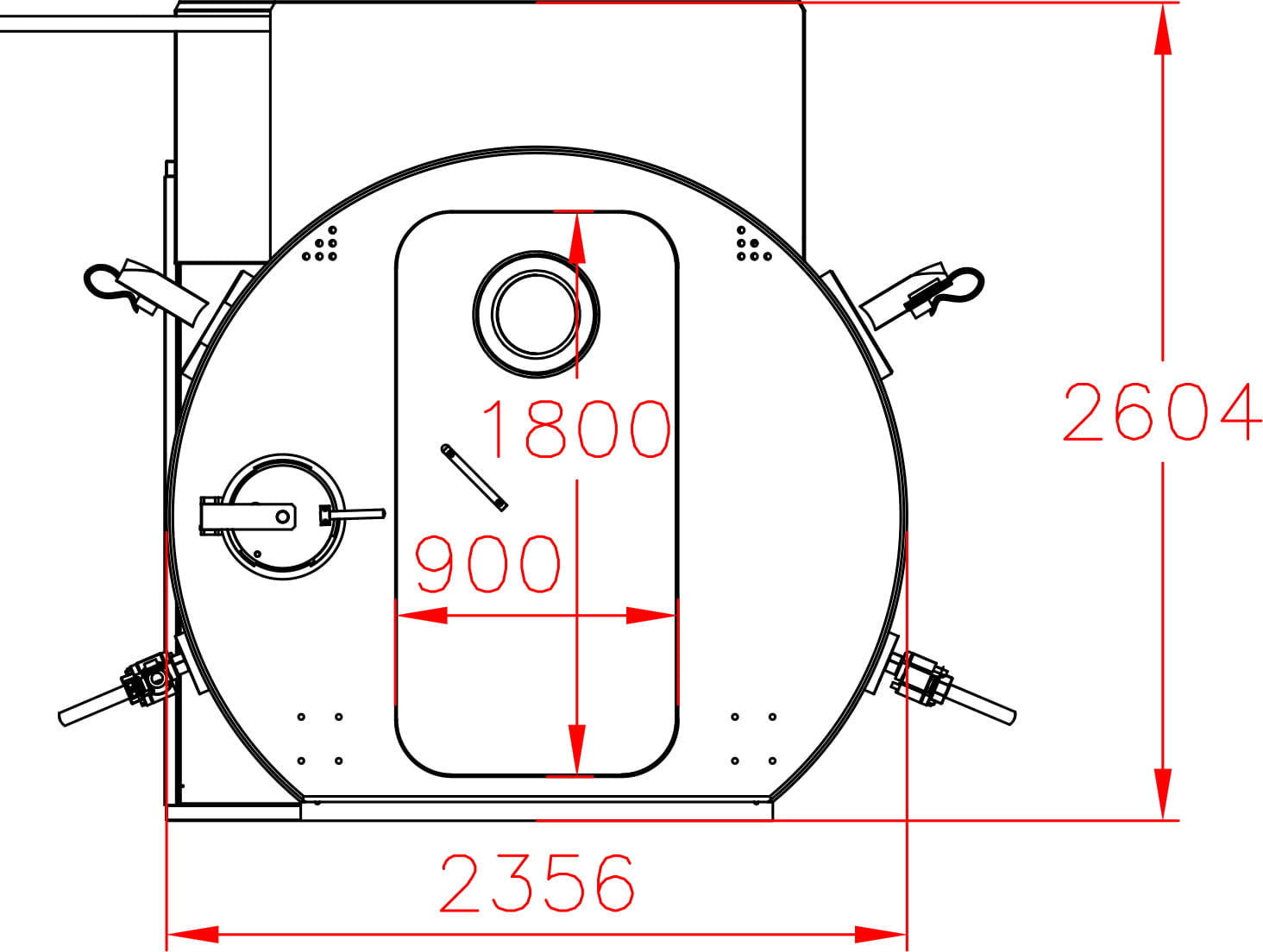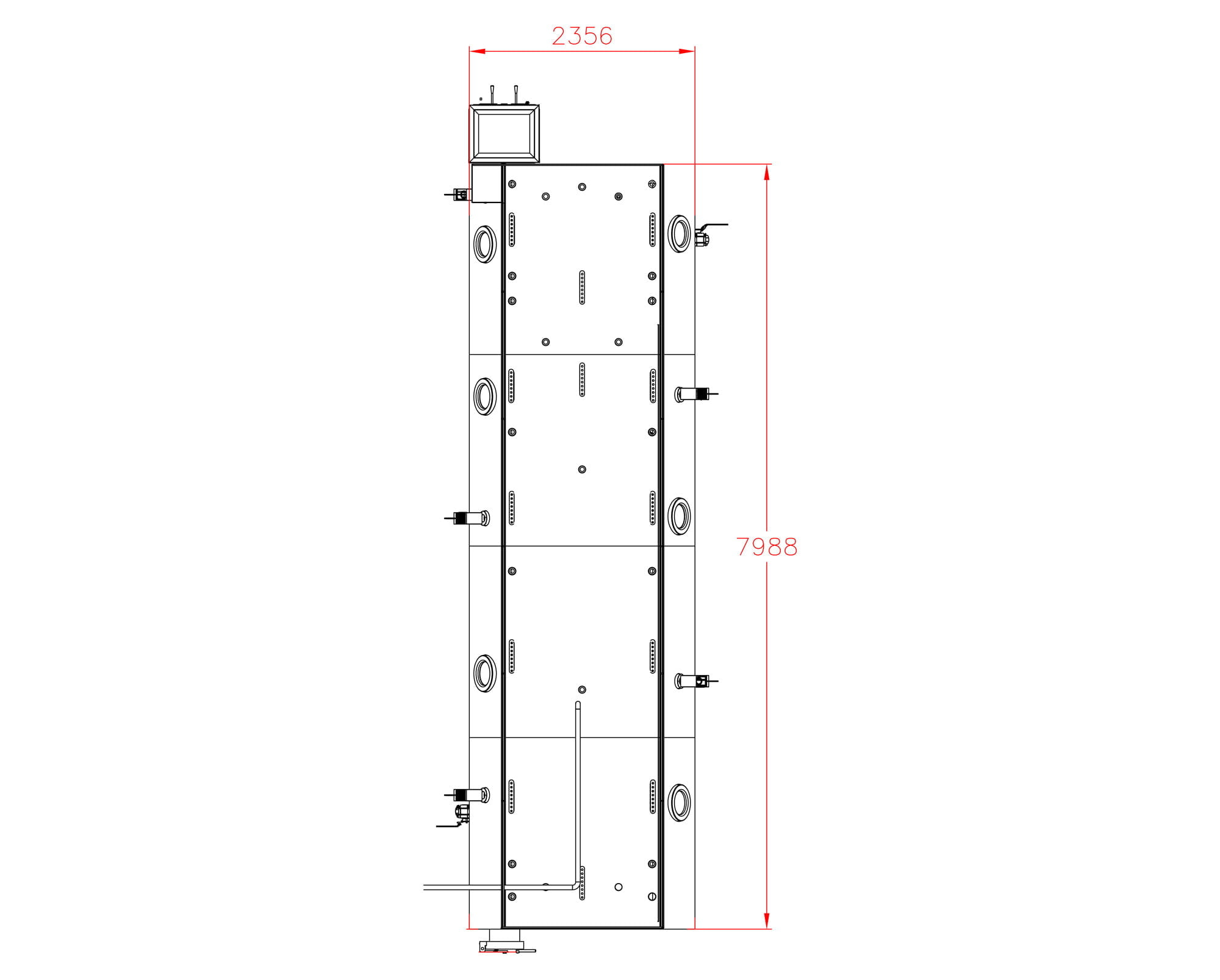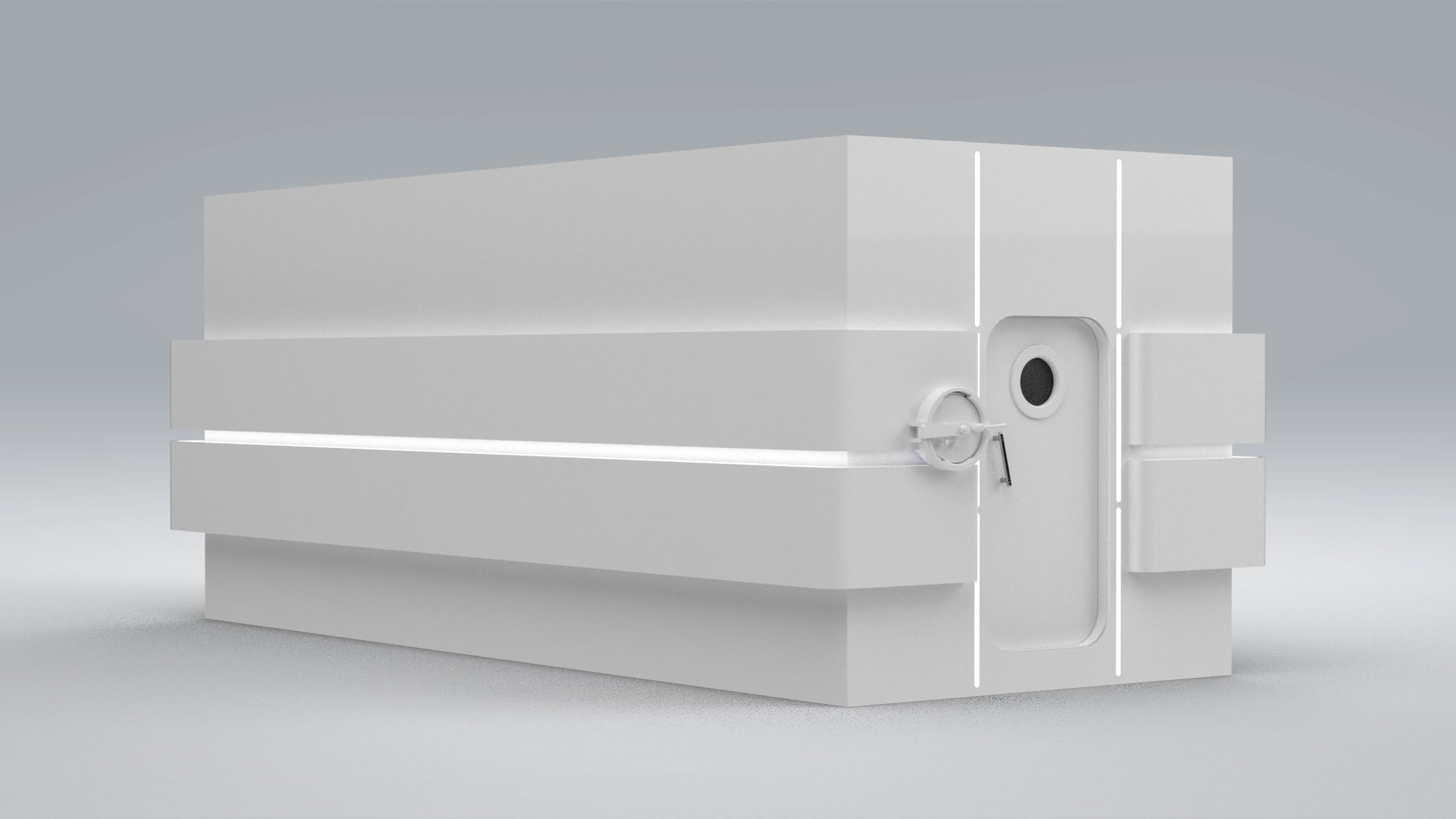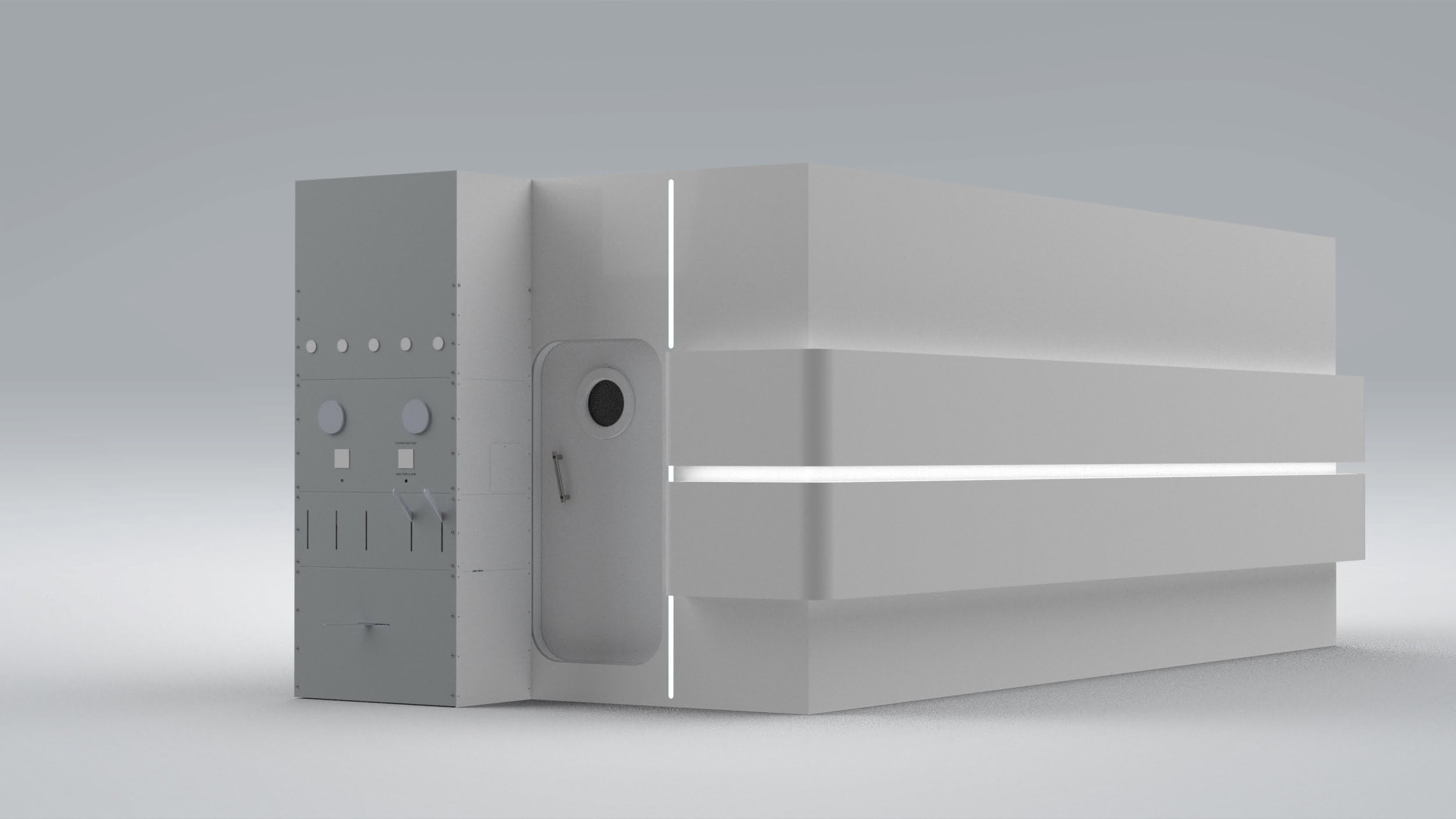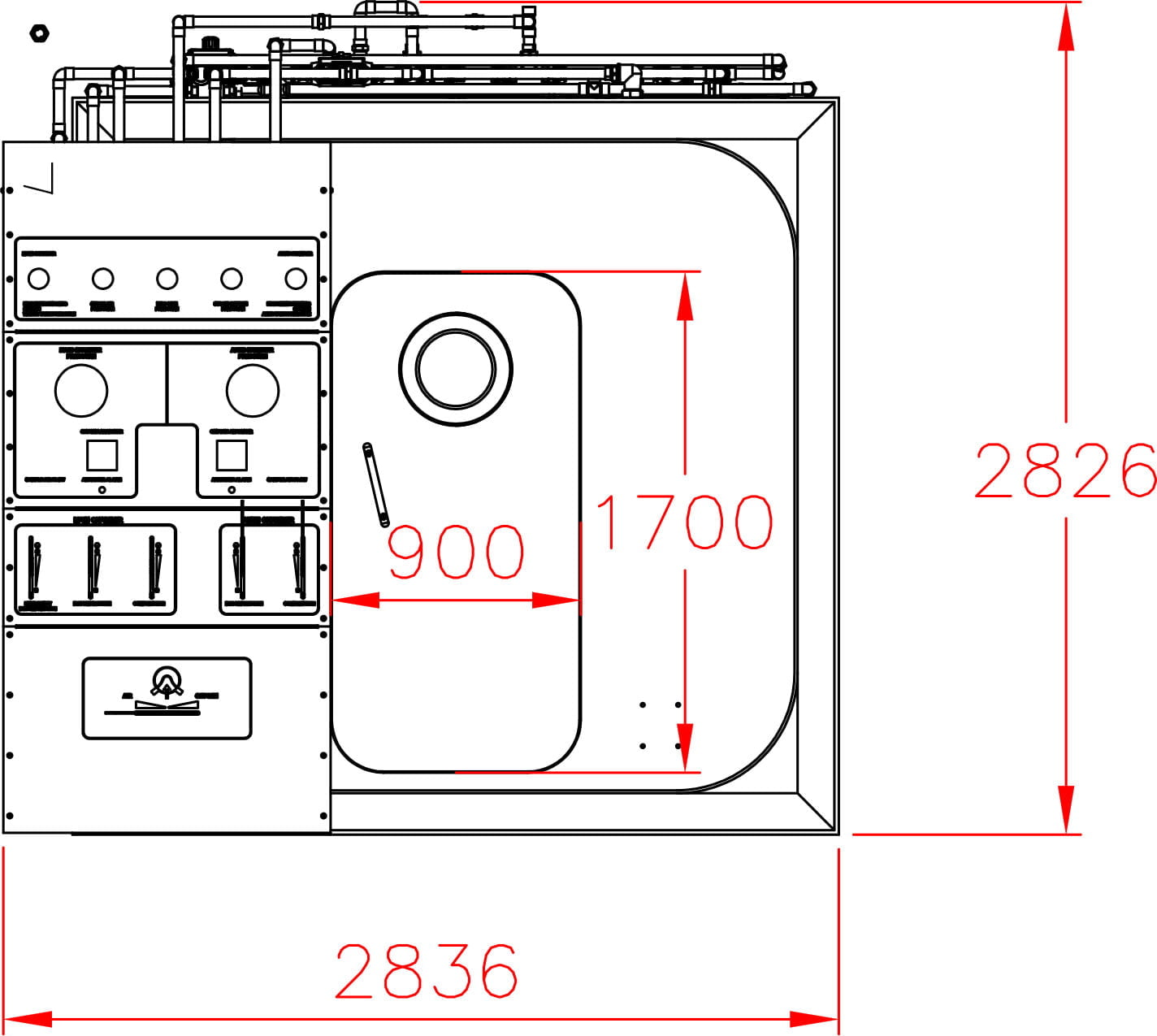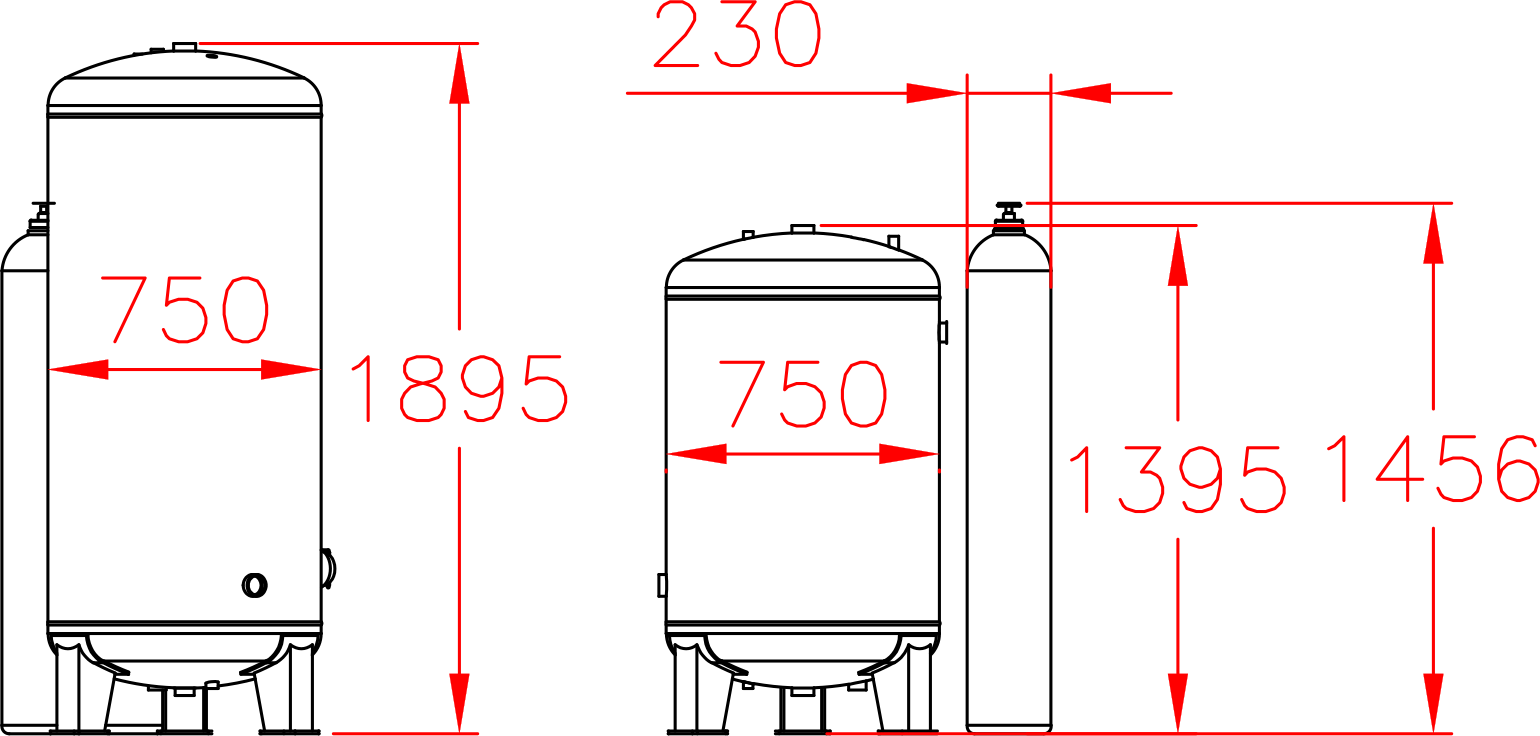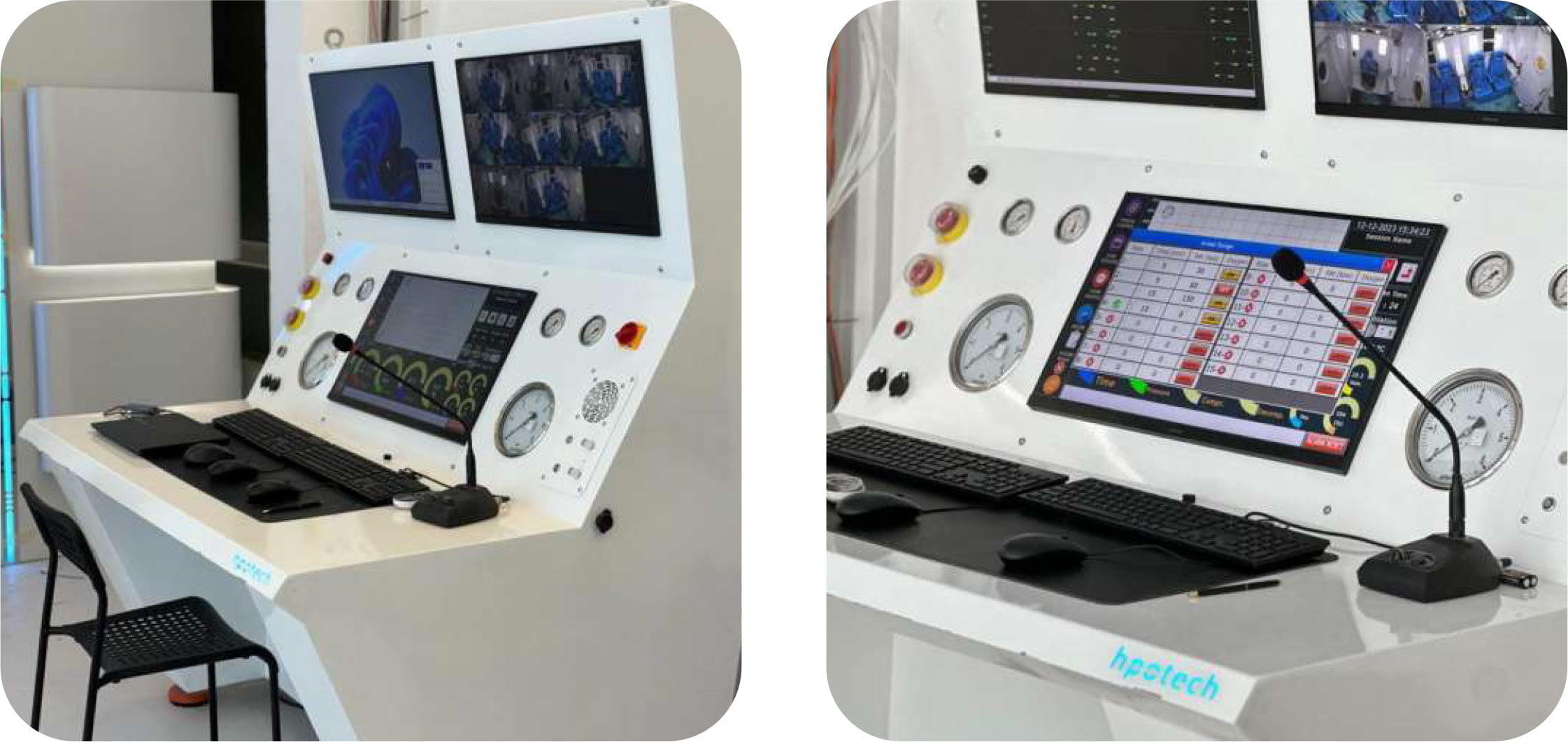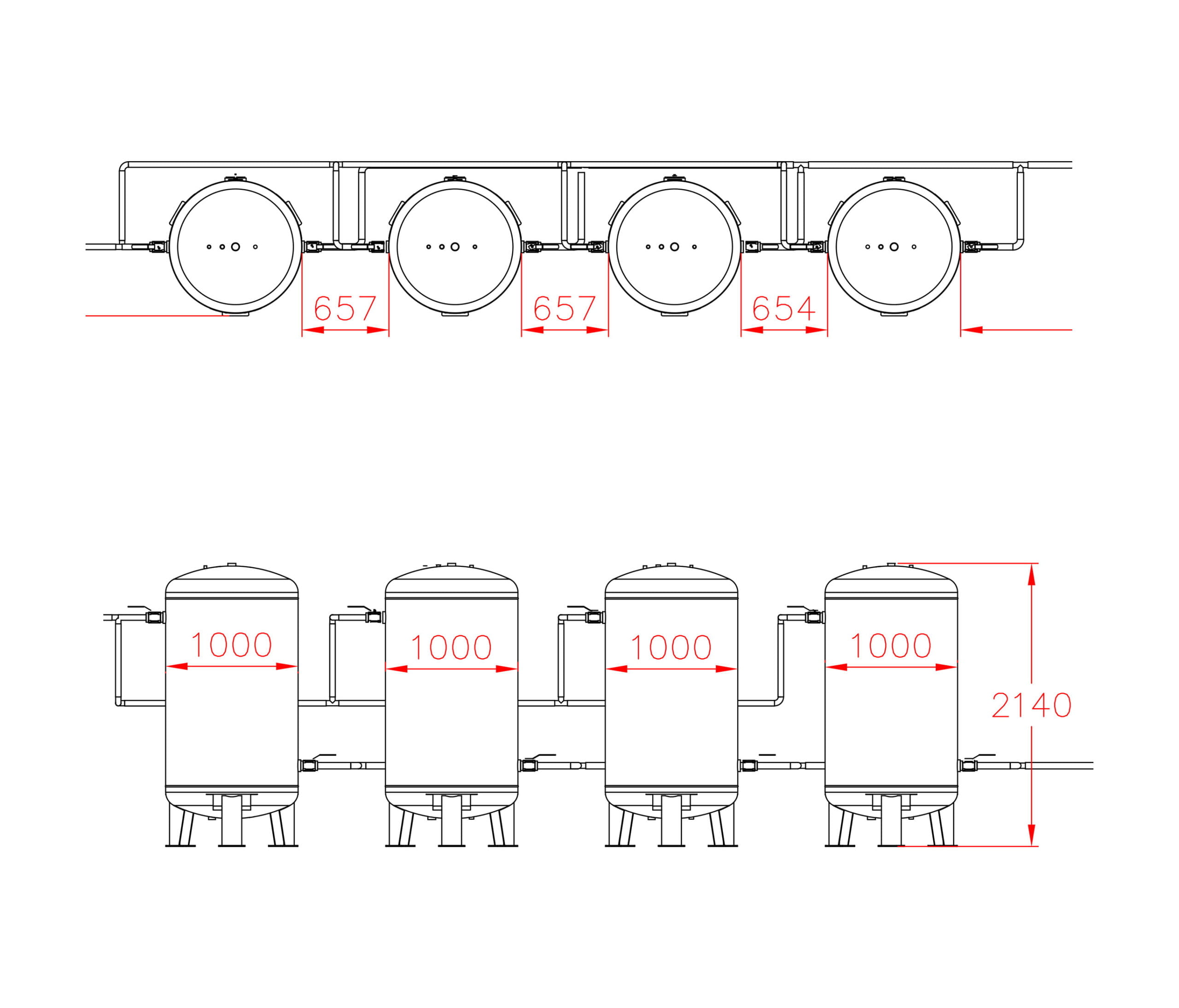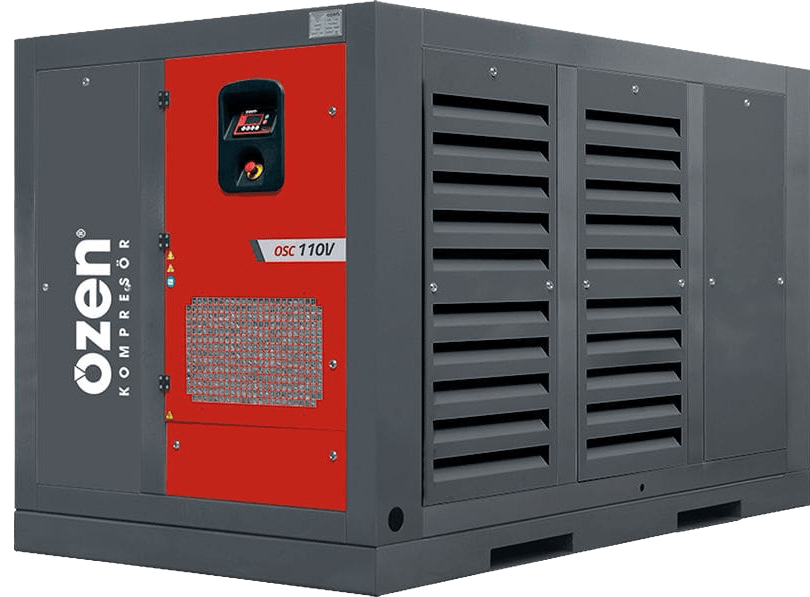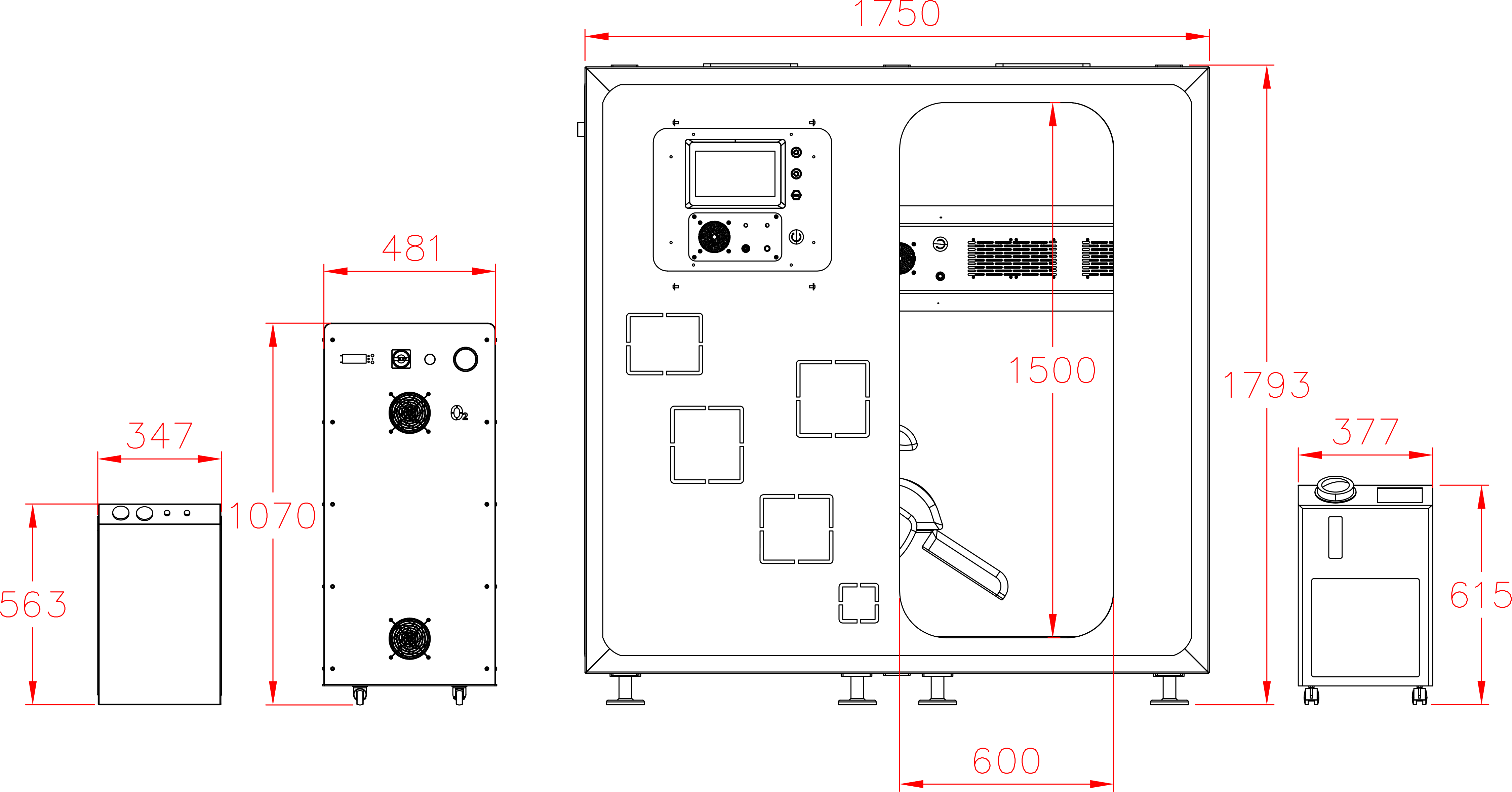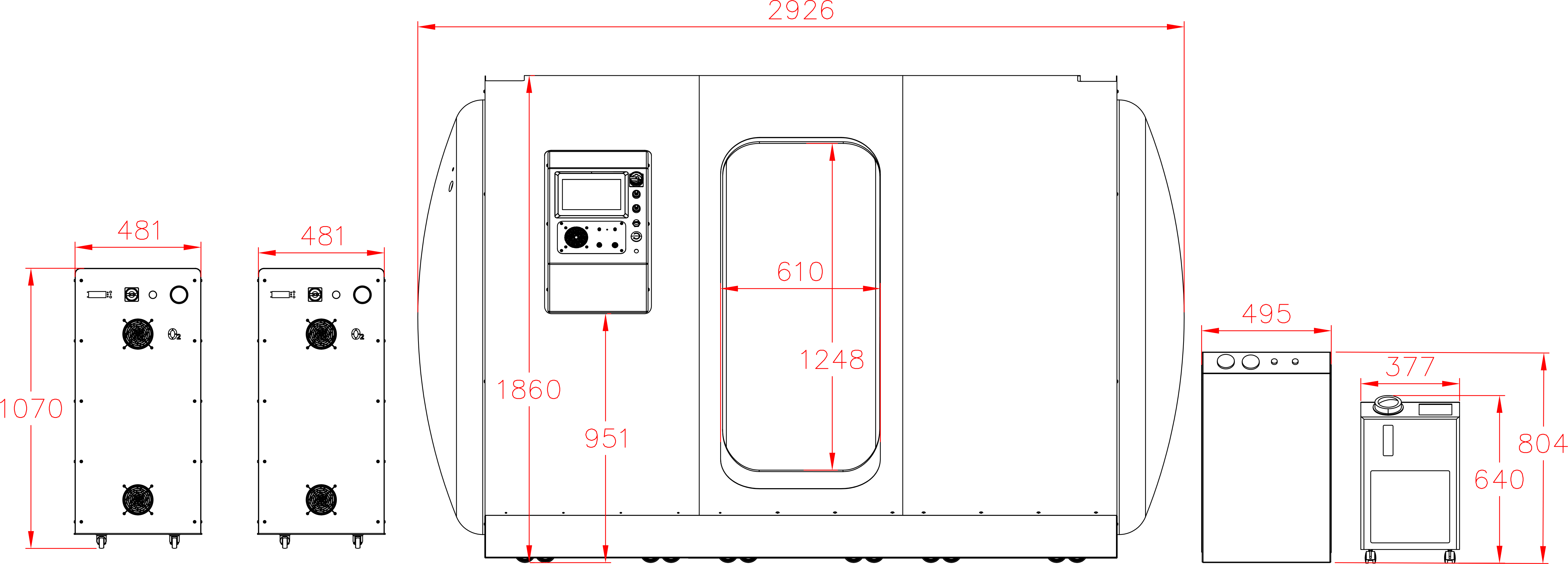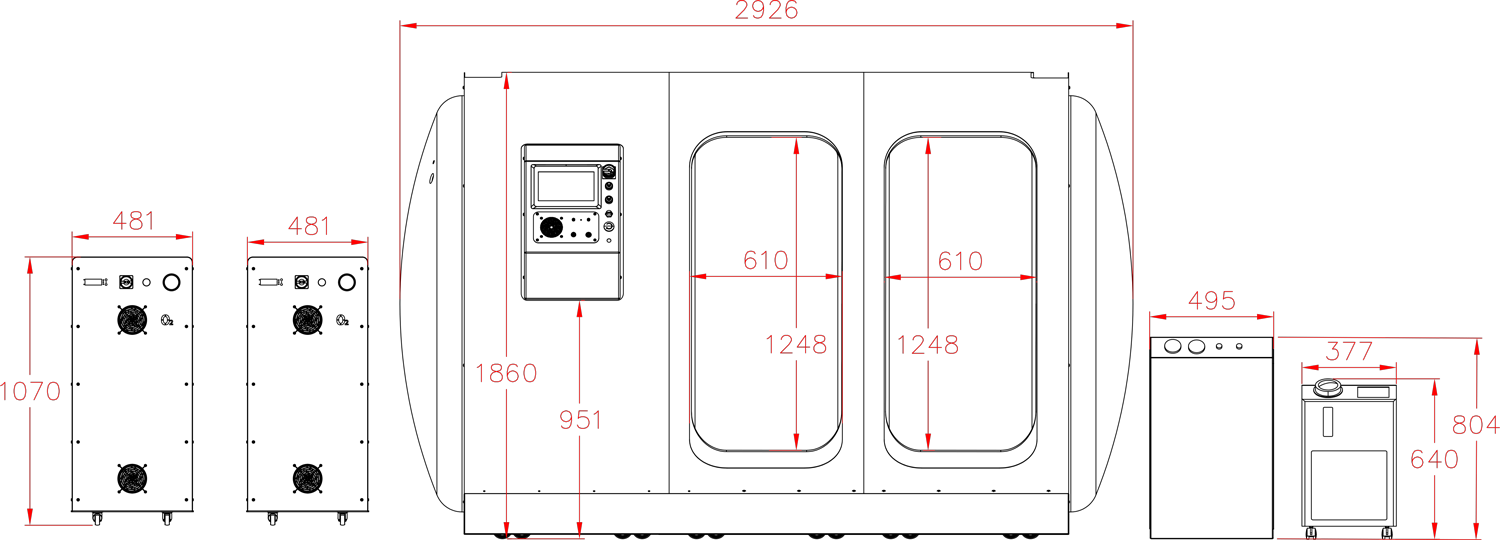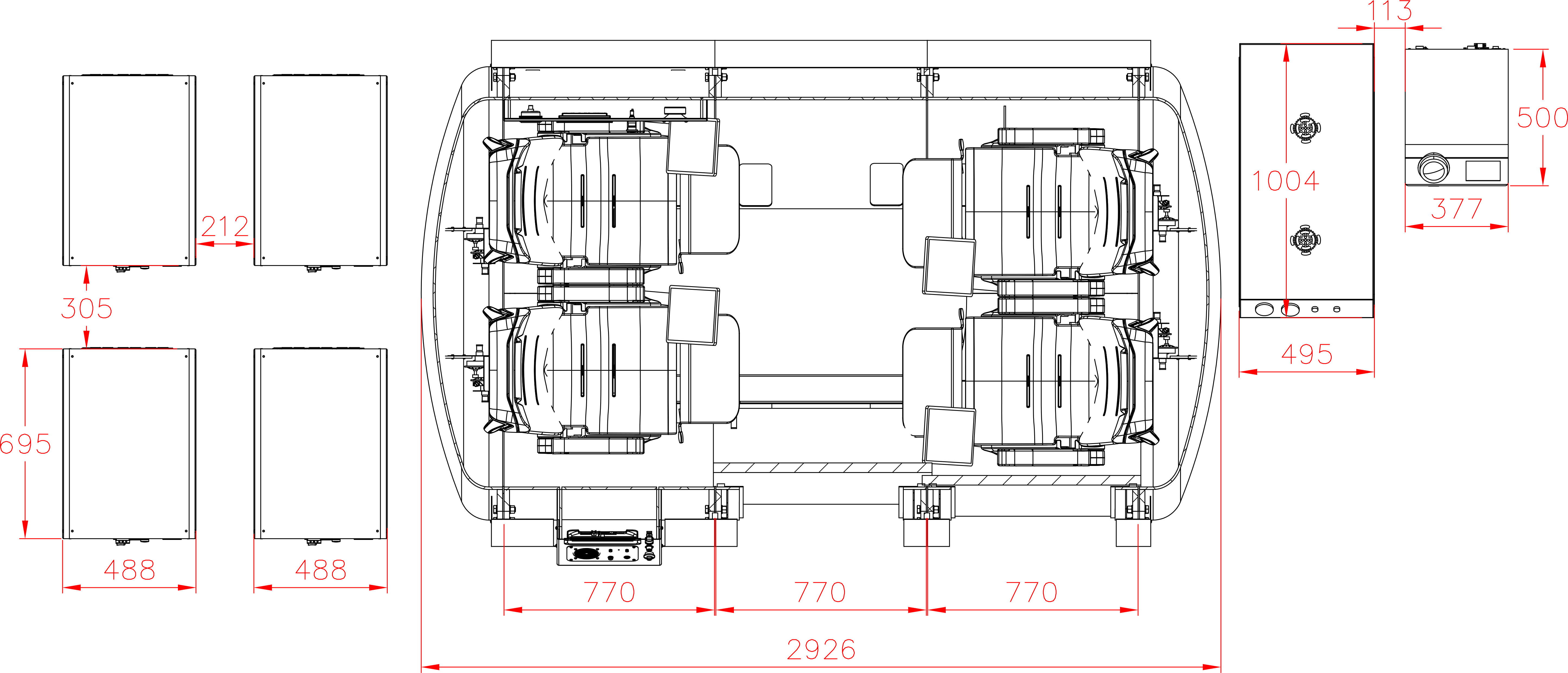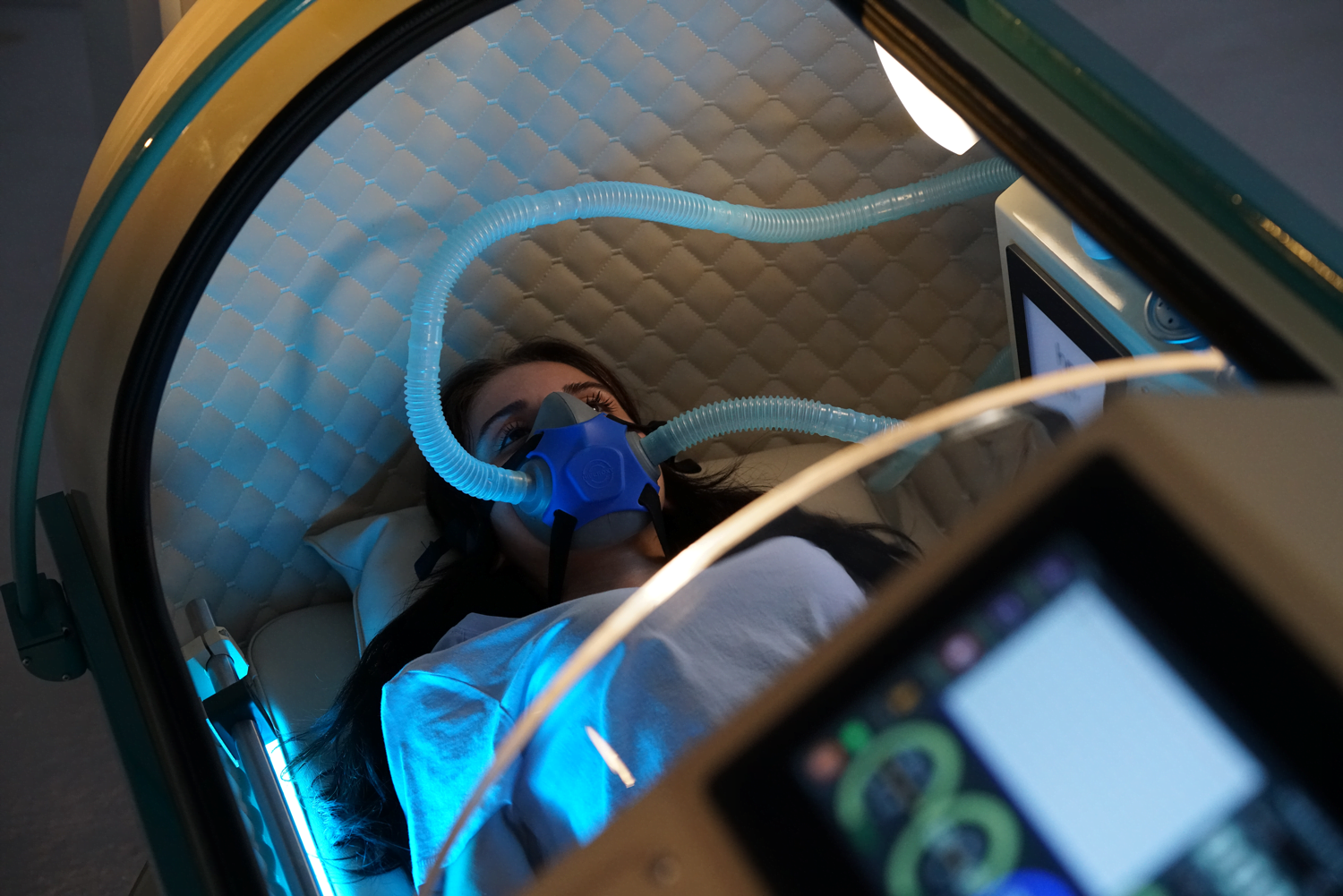Understanding hyperbaric oxygen therapy
HOW HBOT WORKS
The synergy of oxygen and pressure delivers remarkable therapeutic benefits
Hyperbaric Oxygen Therapy (HBOT) is non-invasive treatment that uses pure oxygen under controlled pressure to support the body’s natural healing processes. By breathing oxygen in a hyperbaric chamber, HBOT delivers therapeutic benefits to tissues in need, making it a valuable tool for health, sports recovery, longevity and general wellness.
Under hyperbaric conditions, oxygen dissolves in plasma and other body fluids, allowing it to reach areas where blood flow may be limited. This process, often referred to as “super-oxygenation,” benefits the body in five profound ways:
Increased oxygen delivery
Oxygen penetrates hard-to-reach tissues, supporting optimal healing and function.
HBOT dissolves oxygen directly into plasma and other body fluids, enabling it to reach tissues with limited or compromised blood flow. This process ensures oxygen can penetrate areas affected by injury, swelling, or poor circulation, providing vital support for healing and cellular function.
Accelerated healing
Oxygen reduces inflammation, stimulates tissue repair, and speeds up recovery.
By reducing inflammation and stimulating the production of cells like fibroblasts and osteoblasts, HBOT enhances the body’s natural repair processes. This leads to faster recovery from wounds, fractures, surgeries, and chronic conditions like diabetic ulcers, improving overall healing outcomes.
Antibacterial effects
Oxygen creates an environment that inhibits the growth of certain bacteria and supports infection control.
HBOT creates an oxygen-rich environment that inhibits the growth of anaerobic bacteria, which thrive in low-oxygen conditions. It not only slows bacterial growth but also enhances the effectiveness of antibiotics and promotes faster infection control in wounds and damaged tissues.
Neurological support
HBOT can improve cognitive function and aid in brain recovery.
HBOT increases oxygen availability in the brain, supporting recovery from conditions like stroke, traumatic brain injuries, and post-concussion syndrome. It can also improve cognitive function, reduce brain swelling, and show potential benefits for neurodegenerative disorders like Alzheimer’s and Parkinson’s.
Optimized cellular processes
HBOT promotes robust tissue regeneration by supporting oxygen-dependent processes.
By supporting oxygen-dependent processes such as collagen synthesis, angiogenesis, and energy production, HBOT strengthens tissue regeneration and repair. It also enhances immune function and activates stem cells, supporting long-term recovery and overall cellular health.
APPLICATIONS OF HBOT
From the depths of the ocean to modern medicine: the evolution of hyperbaric oxygen therapy
Hyperbaric Oxygen Therapy (HBOT) is the primary treatment for divers with decompression sickness (DCS), or “the bends,” which occurs when nitrogen bubbles form in the bloodstream and tissues due to rapid pressure changes.
With in-depth medical research and clinical studies, Hyperbaric Oxygen Therapy (HBOT) has evolved from a niche treatment for divers experiencing DCS to a versatile modality with a wide range of applications.
Its ability to deliver oxygen to tissues under pressure makes it a valuable tool in medicine, recovery, and longevity.
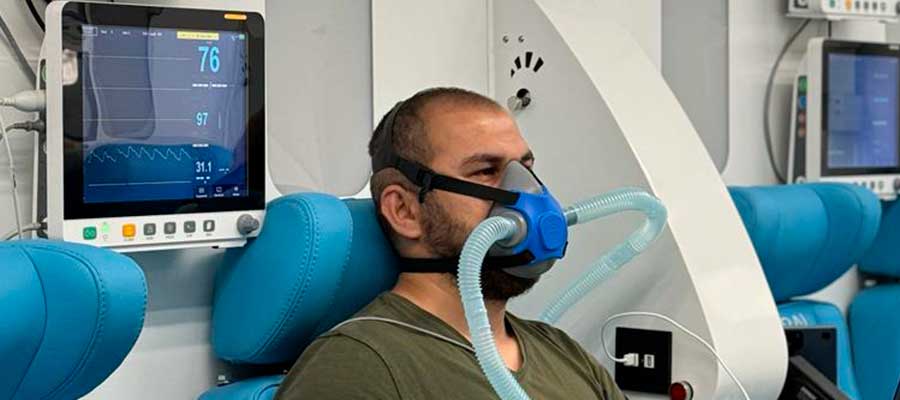
Approved medical indications
HBOT is recognized as an effective treatment for several conditions, often approved by health authorities such as the FDA (Food and Drug Administration, USA), organizations such as the UHMS (Undersea and Hyperbaric Medical Society, USA) or reimbursed by insurers (depending on the country):
Diabetic foot ulcer
Promotes healing in chronic, non-healing wounds, reducing the risk of amputation.
Radiation-induced injuries
Treats tissue damage caused by radiation therapy, including soft tissue and bone necrosis.
Carbon monoxide poisoning
Rapidly removes carbon monoxide from the blood, preventing brain and tissue damage.
Air or Gas embolism
Dissolves trapped air bubbles in the bloodstream, preventing life-threatening complications.
Necrotizing soft tissue infections
Aids in controlling infections like necrotizing fasciitis by inhibiting bacterial growth and improving immune response.
Thermal burns
Speeds up healing, reduces scarring, and minimizes complications.
Osteomyelitis
Effective in managing chronic, treatment-resistant bone infections.
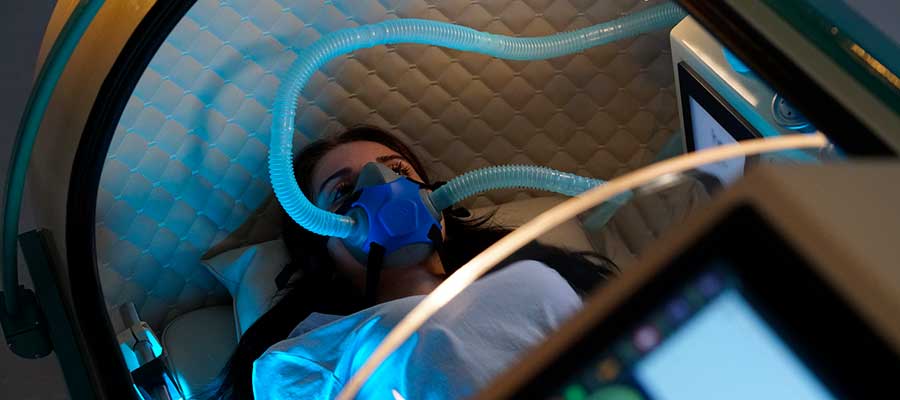
Neurological benefits
HBOT’s ability to deliver oxygen to the brain makes it a promising therapy for neurological conditions:
Traumatic Brain Injury (TBI)
Enhances recovery by reducing inflammation, promoting neuroplasticity, and improving cognitive function.
Stroke recovery
Supports brain tissue repair and functional recovery in patients with ischemic or hemorrhagic strokes.
Neurodegenerative diseases
Emerging research suggests potential benefits for conditions like Alzheimer’s disease, Parkinson’s disease, and multiple sclerosis by improving oxygen delivery and cellular repair.
Idiopathic sudden sensorineural hearing loss
Helps restore hearing when used promptly.
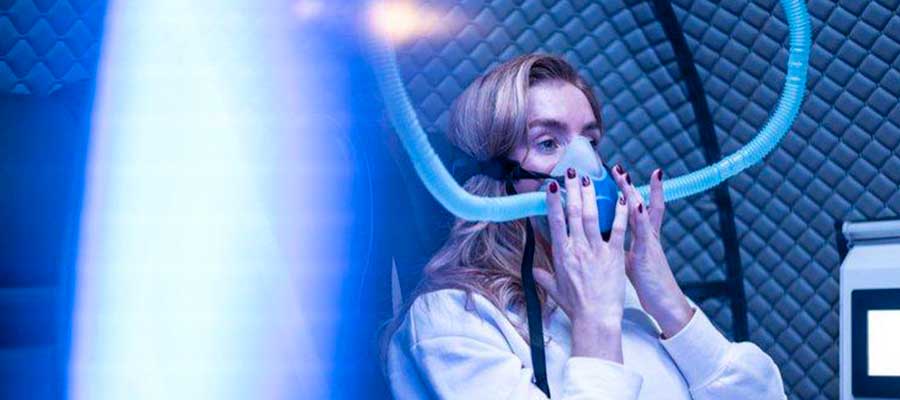
Wound healing and post-surgical recovery
HBOT accelerates healing by delivering oxygen to damaged tissues, reducing swelling, and supporting new blood vessel growth. These effects accelerate recovery and improve outcomes in a variety of conditions:
Post-surgical recovery
Promotes healing of skin grafts and flaps by ensuring optimal oxygen delivery to the affected area. Reduces swelling and inflammation, improving post-operative outcomes.
Chronic wounds
Effective for treating pressure ulcers, which result from prolonged immobility. Supports the healing of venous leg ulcers, often caused by poor circulation in the lower extremities. Helps manage diabetic foot ulcers by improving oxygenation and reducing the risk of amputation.
Traumatic and acute injuries
Helps in recovery from crush injuries by minimizing swelling and enhancing oxygen delivery to compromised tissues. Supports healing in acute traumatic ischemias, where blood supply to tissues has been restricted or impaired.
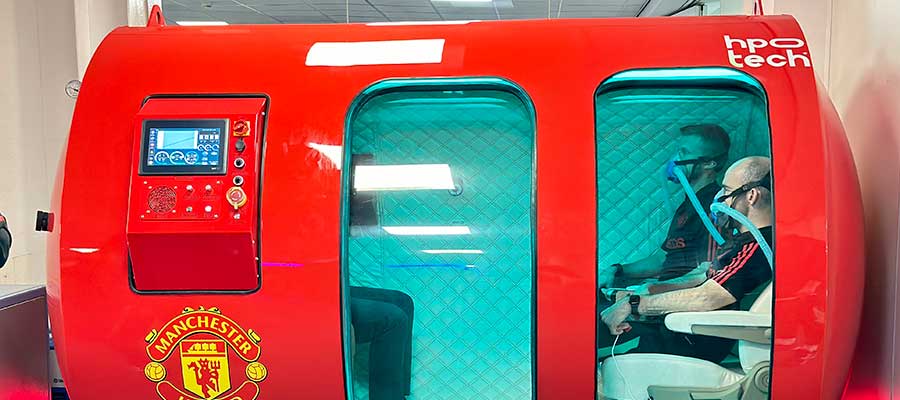
Sports recovery and performance enhancement
HBOT is revolutionizing sports recovery and performance enhancement, gaining popularity among sports medicine physicians, athletes and fitness enthusiasts for its remarkable benefits. By delivering oxygen under pressure, HBOT helps repair tissues, reduce inflammation, and enhance overall physical capabilities.
Injury recovery
By increasing oxygen levels in injured tissues, HBOT reduces inflammation, minimizes swelling, and promotes faster recovery. It also enhances cellular repair mechanisms, helping muscles heal efficiently after tears or strains. Additionally, it significantly shortens recovery periods from injuries or surgeries, allowing athletes to get back in action more quickly.
Performance optimization
For athletes aiming to reach their peak, HBOT provides a natural way to enhance performance. By delivering increased oxygen under pressure, it supports energy production, boosting stamina and endurance during high-intensity activities. HBOT accelerates muscle recovery and reduces fatigue, allowing athletes to train more frequently without the risk of overtraining. The improved oxygenation of tissues enhances strength, agility, and overall athletic performance, making it a powerful tool for achieving physical excellence.
Treatment for overtraining syndrome
HBOT is an effective solution for athletes dealing with overtraining syndrome, a condition characterized by chronic fatigue, reduced performance, and persistent injuries. HBOT combats the physical and mental exhaustion associated with overtraining by replenishing oxygen levels in the body. It reduces oxidative stress and inflammation, addressing the root causes of overtraining symptoms and promoting faster recovery.
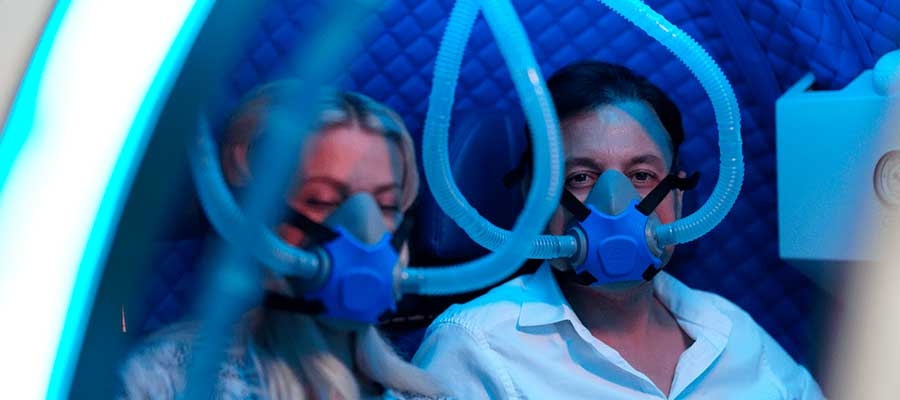
Longevity & anti-aging
HBOT is making waves in the longevity industry for its restorative benefits, offering a natural and non-invasive way to rejuvenate the body and mind.
By harnessing the power of oxygen under pressure, HBOT can improve skin health, slow the signs and biological markers of aging, and enhance mental clarity, making it a sought-after therapy for those aiming to optimize their overall health.
Recent studies even suggest that HBOT may lengthen telomeres—protective caps on the ends of chromosomes associated with cellular aging—highlighting its potential to support longevity at the cellular level.
Skin health
HBOT stimulates collagen production, a key protein for maintaining skin elasticity and strength. The increased oxygen supply improves blood flow and repairs damaged tissues, resulting in smoother, firmer, and more vibrant skin. HBOT can accelerate the healing of skin injuries, scars, and burns, further contributing to a healthier appearance.
Aging well strategies
HBOT combats oxidative stress, a major contributor to aging, by enhancing the body’s natural cellular repair mechanisms. Oxygen delivered under pressure supports mitochondrial function, the powerhouse of cells, leading to more efficient energy production and repair processes. By reducing free radical damage and supporting tissue regeneration, HBOT may slow the aging process and helps maintain youthful vitality at a cellular level.
Better cognitive function, decreased mental fatigue
HBOT is known for its ability to enhance cognitive function and reduce mental fatigue. The therapy improves blood flow and oxygen supply to the brain, supporting focus, memory, and overall cognitive performance. HBOT helps regulate stress hormones and promotes relaxation, leading to better mental resilience and clarity.
Increased energy, better recovery
Beyond aesthetics and cognitive benefits, HBOT supports overall energy levels and physical wellness. By improving oxygenation in the body, it helps combat fatigue and energizes cells. Regular HBOT sessions can lead to improved sleep, enhanced immune function, and an overall sense of well-being.
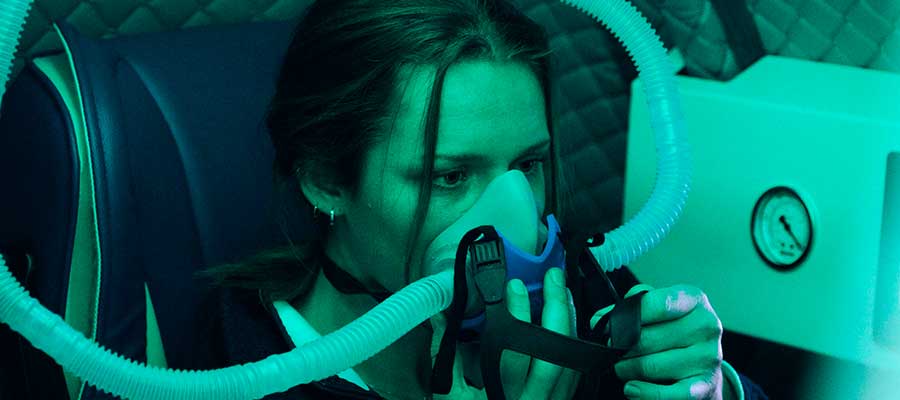
Military and diving applications
HBOT plays a vital role in treating high-pressure-related conditions, such as decompression sickness, which affects divers and aviators suffering from “the bends,” and air embolism, where gas bubbles in the bloodstream—caused by rapid decompression or trauma—are safely resolved through pressurized oxygen therapy.
HBOT and Decompression Sickness (DCS)
DCS occurs when dissolved gases, primarily nitrogen, form bubbles in the bloodstream and tissues due to rapid changes in pressure during diving, flying, or other scenarios involving compressed air exposure.
HBOT is effective for DCS symptoms such as joint pain, muscle weakness, dizziness, fatigue, and neurological issues like confusion or paralysis. Early intervention is crucial for preventing long-term complications.
Bubble reduction
HBOT increases the surrounding pressure inside the chamber, which reduces the size of nitrogen bubbles and helps them dissolve back into the blood.
Increased gas removal
Breathing 100% oxygen in a hyperbaric chamber speeds up the elimination of nitrogen through the lungs.
Improved oxygenation
HBOT delivers high levels of oxygen to tissues affected by reduced blood flow or bubble obstruction, promoting healing and reducing damage.
Anti-inflammatory effects
The therapy helps minimize inflammation caused by bubble-induced tissue injury, reducing symptoms like pain and swelling.
Monoplace hyperbaric chambers
We build HBOT chambers with focus on user accessibility, user interaction and experience. Our systems provide the most effective hyperbaric conditions for high pressure and pure oxygen delivery, with innovative design and comfortable interiors.
Multiplace hyperbaric chambers
We build hard-shell hyperbaric chambers for athletes, sports training and recovery centers, wellness centers, and holistic health clinics. Multiplace chambers help people share the benefits of hyperbaric oxygen therapy and feel the power of oxygen together.







